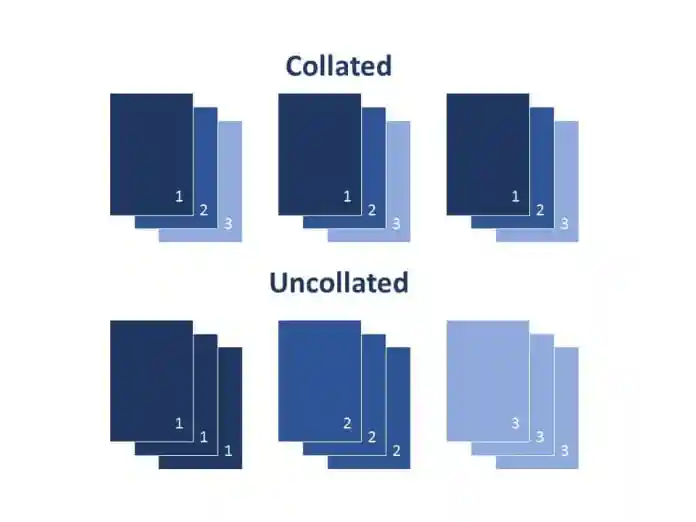In printing, the term “collate” refers to the process of organizing printed pages in a specific, sequential order so that when they are folded or bound, the pages appear in the correct numerical order. Collation ensures that the final printed product—such as a book, magazine, or brochure—is assembled in the right sequence for readability and usability.
The Collation Process
Collation is a critical step in the printing process, especially for multi-page documents. Here’s how the process typically works:
Printing the Pages: The first step involves printing the pages of the document. These pages may be printed in separate batches, depending on the printing equipment and the size of the document.
Sorting and Organizing: Once the pages are printed, they are sorted and organized into the correct sequence. This step can be done manually by sorting the pages into the desired order, or automatically using a collating machine.
Inspection for Accuracy: Collation requires careful attention to detail. Each set of pages must be checked to ensure they are in the correct order and that no pages are missing or duplicated.
Finishing: Once the pages are correctly collated, they may undergo additional finishing processes, such as folding, stapling, or binding, depending on the final product.
Types of Collation
There are two main types of collation:
Straight Collation: In straight collation, each set of pages is assembled in a single sequence from beginning to end (e.g., pages 1-10, then pages 1-10 again, and so on).
Reverse Collation: In reverse collation, the order of the pages is reversed for each set (e.g., pages 10-1, then pages 10-1 again, and so on). This method is less common and is used in specific circumstances, such as when double-sided printing requires pages to be reversed for proper alignment.
The Importance of Collation
Collation is crucial for producing professional, high-quality printed materials. It ensures that the final product is accurate and organized, allowing readers to easily navigate through the document. Proper collation is essential for maintaining the integrity of the content and presenting a polished, professional appearance.
Collation in Modern Printing
Modern printing technology has made the collation process more efficient and reliable. Advanced collating machines can handle large volumes of paper and automatically sort pages into the desired order. These machines often have sensors and quality control features to detect errors and ensure accurate collation.
In conclusion, collation is a fundamental aspect of the printing process that ensures printed materials are organized, complete, and ready for distribution. Whether done manually or using automated equipment, proper collation is key to delivering high-quality printed products to customers.

